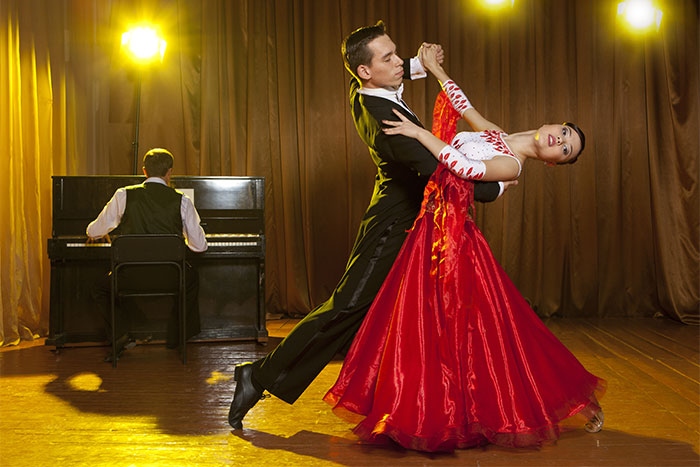
How to become a good follower on the dance floor
To experience a great dance partnership, it is just as important to develop following skills as it is to develop leading skills. Therefore the myth: "All I need is a good leader and I can follow anything" – is only partly true. Only if we have good following skills can the leader dance with power and strength – thus allowing the couple to maintain balance and control and assuring that both partners enjoy the dance.
Frequently you will hear the man (also referred to as the leader) say: "Stop trying to lead – just follow." Well that works only if the lady (also known as the follower) knows "how" and "what" to follow.
There are two basic aspects to following:
- The "How" – Developing our Frame and Connection
- The "What" – Focusing on the difference between "intent" and "movement"
Developing Our Frame and Connection – Smooth Dances (Closed Position) The actual frame (or closed position) is made up of three points of contact – a triangle between the couple:
- 1. The lady places her right hand in the man’s left hand.
- 2. The man places his left hand on the lady’s left shoulder blade.
- 3. The lady places her left hand just below the man’s right shoulder.
This triangle has a closed side and an open side. It is important here to point out that the follower should resist "falling" to the right or open side of the triangle. This can be corrected by becoming aware of keeping our "block" – (hips, ribcage and shoulders – aligned and head over the left wrist.) Also check that your right toe is not turned in.
The "connection" is a little bit more illusive and complex than building the frame or embrace. First, let’s discard the notion that we should give the man "resistance." Instead, the follower should concentrate on holding the elbows slightly in front of the hips, and the hands forward and upward at all times. Another really important aspect of the connection is activating the "core". (If you have participated in palates classes, you are aware of your core; if not, work on strengthening your stomach and sternum so that you are following through your center – thus assisting you in holding your "block" and arms in one piece.) In the next section "intent and movement", we will continue to talk about the arms and elbows and suggest a simple exercise.
Focusing on the difference between "Intent" and "Movement" When the leader is preparing to move forward, he will first compress his supporting foot downwards. This, in turn will begin adding pressure to his upper body, thus indicating an intent to move the lady backward. Take note here that this should simply "indicate an intent" to the lady. This is the critical point where many followers misread the lead. Once they feel this intent - they instantly move. Instead, when the lady feels the intent, she should stay on her supporting foot and compress towards the man until he commences to move. This is worth repeating. Do not move when you feel the pressure or "intent" to move; rather, stay on the supporting foot and press forward (and upward) and wait for the actual movement.
Simple Exercise At this time, we will again discuss the lady’s core, arms and shoulders. When the man is indicating intent, many times the follower will collapse the elbows and/or shoulders. ( Remember the follower’s role is to simply hold her own body forward in one solid piece.) To understand this concept, try this simple exercise:
Stand with your feel about 9" from a wall or closed door – weight towards the balls of the feet. Bring your sternum forward (slightly separating your ribcage) and place your hands on the door or wall. Notice you are simply supporting your own body - not really pressing the door. This is how comfortable your body should feel when you are in dance position. Just simply stay forward and support your own weight. It is important to impress upon the follower that this position does not make you feel heavy – but rather gives the leader the leverage to move forward with power and confidence.
These concepts require a little thought and practice; but when you finally understand "how" and "what" to follow, both you and your partner will enjoy the dance!